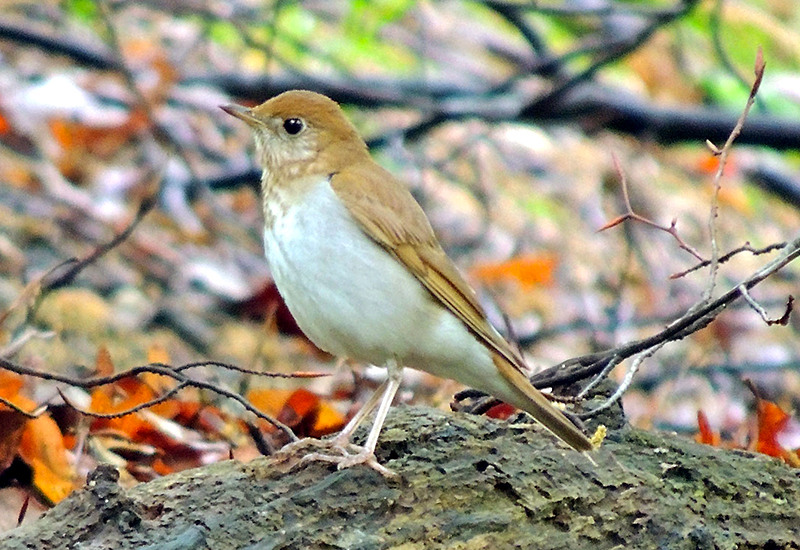| Early Spring Date: | April 21 |
| Late Spring Date: | May 26 |
| Best Dates to See in Spring: | April 28 - May 22 |
Spring: Veeries are common at Monticello Park. They arrive at the end of April and the beginning of May, and they are relatively easy to find during the second week in May. Veeries nest in the Washington metro area, but not at Monticello.
Fall: In most years, fewer than 10 Veeries are recorded at Monticello during the fall. The most likely time to see one is during the first two weeks in September.
Where to See Them in the Park
Veeries stay on the ground most of the time. The best place to look for them is on the ridge, but they can be found anywhere in the park. They sometimes bathe in the stream, often near the bridge.
Physical Description

Male and female Veeries look similar, and there is no variation between spring and fall plumage. Veeries have the least breast spotting of any of the spotted thrushes who visit Monticello. Their back is a warmer brown than the Swainson's and Gray-cheeked, but not as bright as the Wood Thrush.

Some Veeries look pale and have few spots on their breast.
Vocalizations
The Veery is named for its call note, which is an emphatic VEER. One hears this note frequently when a Veery is on the ridge. They do not often sing at Monticello, which is unfortunate. The haunting song is descending, and the sound is impossible to convey with words. The most likely time to hear it in the park is on an overcast day, although they occasionally sing when the sun is out.
Hear the vocalizations of the Veery.Notes
Veeries sound as if they are singing in two-part harmony with themselves, and in a sense, they are. Birds have a vocal organ called the syrinx, which looks like an upside down Y. Each side of the fork is attached to one of the two lungs, and the straight part is attached to the windpipe. Each side is capable of producing a separate sound, allowing Veeries (and some other songbirds) to sing in harmony with themselves. Special muscles in this area can affect the sound and pitch of the song. The corresponding organ in humans is the larynx. It is located higher in the human trachea and does not fork into two parts.
Origin of Names
Common Names: Veery from its VEER call note.
Genus Name: Catharus means pure, possibly in reference to thrush song.
Species Name: Fuscescens means slightly dark.
Veery video footage 1 — video footage 2
Return to the Index
